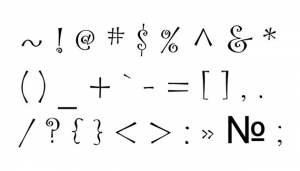
[Adobe Stock]
What is ‘comprehension summary’?
It is a question in O level and A level English Paper 2 where students must summarise a section of the passage. This is often done within a word limit – 80 words for O levels and 120 words for A levels.
Many students struggle with this component because they need to rephrase and convey the key points clearly and concisely. Here are some ways we can help our students overcome this and improve their comprehension summary writing.
Teach Them the Two-Column System

[Freeology]
Using the two-column system is a great way to help students organise points and structure their summary answers. Here’s how it works:
1. Draw up two columns. Get your students to practise writing it on their question paper and not on the answer sheet.
2. On the left column, write down the key points. Usually, there are eight key points, but sometimes, there might be more, so eight to ten key points are enough.
3. On the right-hand side, rephrase and reorganise the key points and sentences.
4. Put the paraphrased points together and draft the summary on the question paper.
5. Once it is done, then get your student to copy over the finalised draft onto the answer sheet.
This lets students edit and mend their work before submitting the finalised version, which creates less mess on the exam paper.
Teach Them to Cut Down on Their Word Count

[Adobe Stock]
Teaching your students to reduce their word count ensures that their answer does not exceed the word limit. Otherwise, the examiners will just cut away sentences and words beyond the maximum number of words.
It also makes their answer more concise, increasing your students’ chances of getting a good mark. To keep within the word count, teach your student to:
1. Use hyphenated words
2. Trim wordy phrases
3. Omit redundant sentences
4. Remove Adverbs and Adjectives
5. Use an active voice
6. Cut down on transition words
7. Use punctuations (refer to next point)
Teach Them How to Use Punctuations

[Adobe Stock]
Teach your students to use punctuations like ‘: (colon)’, ‘; (semi-colon)’, and ‘- (hyphen)’. This is a great way to cut down on words and break up sentences. It can also be used to emphasise important points, making your students’ answers more precise and direct.
When your students use proper punctuation, it makes the answer easier to read and comprehend. On the other hand, improper use of punctuation could change the meaning of the key points so make sure they don’t make this mistake!
Practice Exam Papers and Exercises

[Adobe Stock]
The key to writing the best summaries is to practice. Get your student to work on practice exam papers and compre summary exercises. This helps them to get more experience and refine their summary writing.
Using students’ Ten Year Series is the best because it shows the key points or you can also use assessment books. Do note that some answer keys don’t offer the model answer and just the relevant points, so you might need to write out a sample yourself.
Conclusion

[Adobe Stock]
Writing English comprehension summaries can be challenging for students. But as long as they are equipped with useful techniques, practice and good command of English writing, they’ll be prepared for the upcoming exam.
